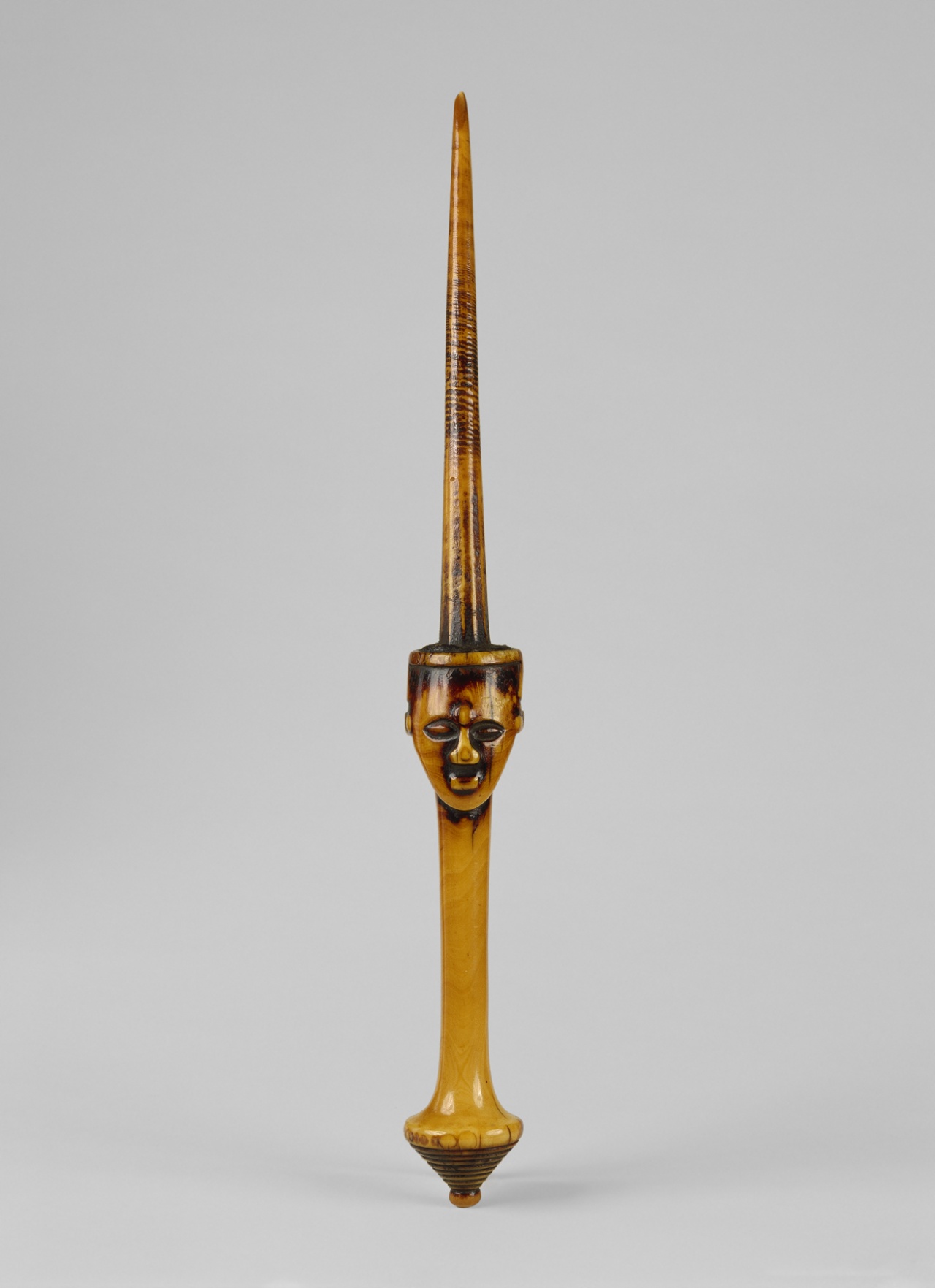
Ivory
H: 39.8 cm
Probably from Ndengésé region of Zaïre
Ndengésé art
Probably 17th century
Ex collection: Schoveau, Brussels
George Ortiz (1971-1978)
Count Jean-Jacques de Launoit (1978-1981)
Carved from elephant tusk ivory, the handle beautifully polished. The lower section of the pointed shaft faceted, its central part with circular grooves to enable fixing of the whisk (now missing).
Condition: a blackened longitudinal hairline crack down the left side of the face with slight abrasions above the left eye.
Patina: rich yellowish honey colour with traces of a dark resinous substance.
The handle is surmounted by a human head and the somewhat flattened face shows three round scarifications, one in front of each ear and one above the bridge of the nose. A large circular knob protrudes beneath the occiput. The lower part of the handle ends in a tapering knob with circular ribbing. On top of the head a long faceted shaft tapers to a point.
Formerly ascribed to the Bakuba, though the stylistic affinity to the Ndengésé was noted, we now consider that, by comparison with the firmly ascribed wooden figure [1] in the Völkerkunde Museum of Zürich University and another figure [2] in the Musée Royal du Congo Belge in Terveuren, this royal fly-whisk [3] is certainly Ndengésé.
The circular knob beneath the occiput, a symbol of royalty, confirms the attribution.
Exhibited and Published:
Arts africains dans les collections genevoises, cat. no. 87, pp.
103-104, 81 fig. 60-61.
Objets interdits, p. 14 col. ill., p. 22 black & white ill.
Meisterwerke afrikanischer Plastik, cat. no. 41, pp. 85, 55 ill.
Published :
The George Ortiz Collection of Primitive Works of Art. Sotheby Parke Bernet, London, 29 June 1978, no. 55, pp. 50, 51 col. ill.
Ethnography Glossary
1 Leuzinger, E.: Die Kunst von Schwarz-Afrika (Zürich, 1970-71), no. V 20, pp. 406, 306 ill.
2 Leiris, M., Delange, J.: Afrique Noire. La création plastique, (Univers des Formes. Paris, 1967), no. 28, pp. 410, 29 ill.
3 Shortly after the author's acquisition W.B. Fagg expressed verbally that the date of this piece was 16th-18th century and that it was in all likelihood a royal fly-whisk rather than a sceptre.